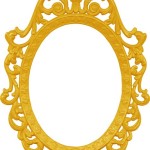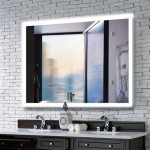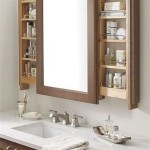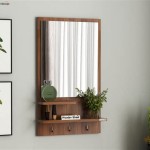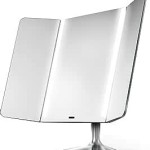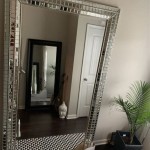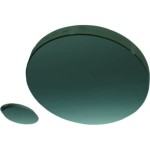Over-The-Door Mirror Hangers: A Comprehensive Guide
Over-the-door mirror hangers offer a convenient and space-saving solution for incorporating full-length mirrors into any living space. They eliminate the need for wall-mounted installations, making them particularly attractive for renters or individuals seeking a damage-free option. This guide will explore the various types of over-the-door mirror hangers, their installation processes, key features to consider, and potential advantages and disadvantages.
One primary classification of over-the-door mirror hangers differentiates between those designed specifically for framed mirrors and those suitable for frameless mirrors. Hangers for framed mirrors typically consist of hooks or brackets that grip the top edge of the frame. Conversely, hangers for frameless mirrors commonly employ adhesive pads or clamps to secure the mirror's smooth surface. Choosing the correct hanger type depends entirely on the mirror's construction.
Several materials are common in the construction of over-the-door mirror hangers. Metal, often steel or aluminum, provides durability and strength. Plastic hangers offer a lighter and often more budget-friendly option, although potentially sacrificing some load-bearing capacity. Some hangers incorporate padded elements, usually foam or rubber, to protect the door's surface from scratches and to enhance the grip on the mirror.
Installation methods for over-the-door mirror hangers are generally straightforward. Most hangers simply hook over the top edge of the door, requiring no tools or hardware. Some models might feature adjustable hooks to accommodate varying door thicknesses. For adhesive-based hangers, proper surface preparation is critical for secure adhesion. This usually involves cleaning the door and the back of the mirror with a suitable cleaning agent to remove dust and grease. Certain frameless mirror hangers may require tightening screws or clamps for a secure hold after placement.
Several factors merit consideration when selecting an over-the-door mirror hanger. Weight capacity is paramount. The hanger must be capable of supporting the mirror's weight safely. Door thickness compatibility is also crucial. Hangers designed for standard interior doors may not fit thicker or thinner doors. The hanger's aesthetic appeal should also be considered, ensuring it complements the mirror and the surrounding décor. Some hangers feature decorative finishes or minimalist designs to blend seamlessly with various styles.
Adjustable features offer added versatility. Adjustable hooks accommodate different door thicknesses, while adjustable clamps provide a secure fit for a range of mirror sizes. Some hangers even allow for height adjustment, enabling users to customize the mirror's position. Padding or protective materials can prevent scratches and damage to both the door and the mirror. These features contribute to the longevity of both the door and the mirror, and minimize the risk of accidental slipping.
Over-the-door mirror hangers offer several advantages. Their ease of installation eliminates the need for drilling or complicated mounting procedures, making them ideal for renters or those who prefer not to make permanent alterations. Their portability allows for easy relocation of the mirror to different rooms or residences. This adaptability provides flexibility in interior design and accommodates changing needs. The space-saving design maximizes floor space and is especially beneficial in smaller rooms or apartments.
Potential disadvantages of over-the-door mirror hangers should also be acknowledged. The weight limit restricts the size and type of mirror that can be hung. Exceeding the weight capacity can lead to damage to the door or the mirror, or even cause the hanger to fail. Compatibility issues can arise with certain door types, such as those with unusually thick or thin profiles, or those with decorative moldings. Some users might find the over-the-door hanging method less secure than traditional wall mounting, although choosing a high-quality hanger minimizes this risk.
Proper maintenance of over-the-door mirror hangers is generally minimal. Periodically checking the hanger for signs of wear or damage is advisable. Tightening any loose screws or clamps can prevent slippage or instability. Cleaning the hanger and the contact points with the door and mirror can remove dust and debris and maintain optimal grip. Following the manufacturer's instructions regarding weight limits and installation procedures ensures safe and effective usage.
The market offers a wide variety of over-the-door mirror hangers to suit diverse needs and preferences. Simple hooks are suitable for lightweight framed mirrors, while more robust clamp-style hangers are designed for heavier frameless mirrors. Understanding the different types, materials, and installation procedures allows consumers to make informed decisions when selecting the appropriate hanger for their specific mirror and door configuration.

Over The Door Hanging Mirrors A Comprehensive Guide

Gymax Full Length Over The Door Mirror Hanging Hooks Wall Mount Dressing White Com

Full Length Over The Door Mirror Hanging Hooks Wall Mount Dressing White

Diy Ideas To Replace Over The Door Hooks Mirrors Playbook

Diy Ideas To Replace Over The Door Hooks Mirrors Playbook

Gymax 13 In W X 47 H Modern Rectangle Wood Full Length Over The Door Mirror Hanging Hooks Wall Mount Dressing Black Gym10444 Home Depot

Tangkula Full Length Over The Door Mirror Hanging Hooks Wall Mount Dressing Black Target

3 Ways To Hang A Door Mirror Wikihow

For Living Rectangular Hanging Door Mirror Assorted Colours 14 X 50 In Canadian Tire

Neutype 55 16 Full Length Over The Door Mirror Hanging For Bedroom Dorm Room White Com
See Also


